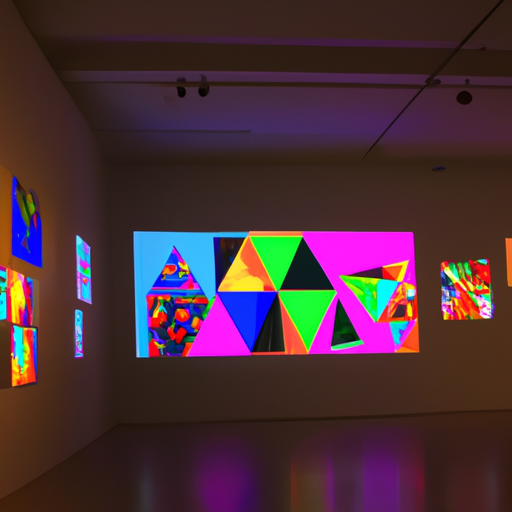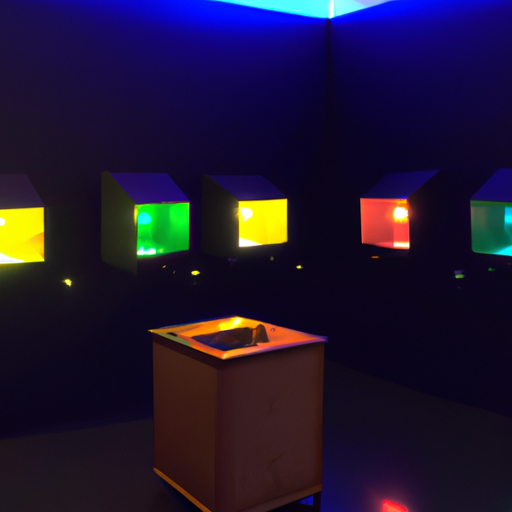
-
Table of Contents
- Interactive Art Installations and Their Design Components
- What are Interactive Art Installations?
- The Design Components of Interactive Art Installations
- 1. Conceptualization
- 2. Technology Integration
- 3. Spatial Design
- 4. User Interface and Interaction Design
- The Impact of Interactive Art Installations
- 1. Audience Engagement
- 2. Emotional and Sensory Experience
- 3. Exploration of New Technologies
- 4. Social Interaction and Connection
- Conclusion
Interactive Art Installations and Their Design Components

Art has always been a medium for self-expression and communication. Over the years, artists have pushed the boundaries of traditional art forms, exploring new ways to engage and interact with their audience. One such form is interactive art installations, which combine technology, design, and audience participation to create immersive experiences. In this article, we will delve into the world of interactive art installations, exploring their design components and the impact they have on the viewer.
What are Interactive Art Installations?
Interactive art installations are artworks that require the active participation of the viewer to complete the piece. Unlike traditional art forms, where the viewer is a passive observer, interactive installations invite the audience to become an integral part of the artwork. These installations often incorporate various elements such as sound, light, motion, and technology to create a multi-sensory experience.
One famous example of an interactive art installation is Yayoi Kusama’s “Infinity Mirrors.” This installation consists of mirrored rooms filled with LED lights, creating an illusion of infinite space. Viewers are allowed to enter the rooms and become immersed in the mesmerizing patterns of light. The installation not only engages the viewer visually but also evokes a sense of wonder and contemplation.
The Design Components of Interactive Art Installations
Design plays a crucial role in creating successful interactive art installations. It involves careful consideration of various components to ensure a seamless integration of technology, aesthetics, and audience engagement. Let’s explore some of the key design components of interactive art installations:
1. Conceptualization
Every interactive art installation begins with a concept or idea. Artists often draw inspiration from their surroundings, personal experiences, or social issues. The concept sets the foundation for the entire installation, guiding the artist’s creative decisions and shaping the overall experience for the viewer.
For example, Rafael Lozano-Hemmer’s “Pulse” installation uses heart rate sensors to detect the pulse of participants. The concept behind this installation is to explore the connection between human life and technology. By visualizing the participants’ heartbeats through light and sound, the installation creates an emotional and interactive experience.
2. Technology Integration
Technology plays a vital role in interactive art installations, enabling artists to create dynamic and responsive experiences. From sensors and cameras to motion detectors and virtual reality, artists have a wide range of tools at their disposal. The choice of technology depends on the desired interaction and the artist’s vision.
One notable example is Chris Milk’s “The Treachery of Sanctuary.” This installation uses motion sensors and computer vision to transform participants’ shadows into animated birds. As viewers move their arms, the birds respond, creating a mesmerizing and interactive display. The integration of technology in this installation enhances the viewer’s engagement and creates a unique experience.
3. Spatial Design
The spatial design of an interactive art installation is crucial in creating an immersive and engaging environment. Artists carefully consider factors such as lighting, sound, and physical layout to enhance the viewer’s experience. The arrangement of elements within the space guides the viewer’s movement and interaction with the artwork.
TeamLab’s “Borderless” exhibition in Tokyo is a prime example of effective spatial design. The exhibition features various interactive installations spread across a vast space. Each installation is carefully placed to create a seamless transition between different artworks, allowing viewers to explore and interact with the installations at their own pace. The spatial design of “Borderless” enhances the overall experience and encourages viewers to engage with the art in a meaningful way.
4. User Interface and Interaction Design
The user interface and interaction design of an interactive art installation determine how the viewer interacts with the artwork. It involves creating intuitive and user-friendly interfaces that allow participants to engage with the installation effortlessly. The design should encourage exploration and discovery, providing clear instructions or cues for interaction.
One example of effective user interface and interaction design is Random International’s “Rain Room.” This installation uses motion sensors to detect the presence of viewers and creates a rain-free zone around them. The user interface is minimal, with no visible controls or buttons. Participants can simply walk through the rain, experiencing the sensation of being surrounded by falling water without getting wet. The simplicity of the design allows for a seamless and intuitive interaction, enhancing the overall experience.
The Impact of Interactive Art Installations
Interactive art installations have a profound impact on both the viewer and the art world as a whole. Let’s explore some of the key impacts:
1. Audience Engagement
Interactive art installations break down the barrier between the artwork and the viewer, encouraging active participation and engagement. By involving the audience in the creation and completion of the artwork, these installations create a sense of ownership and connection. Viewers become active participants, shaping their own experience and interpretation of the artwork.
2. Emotional and Sensory Experience
Interactive art installations have the power to evoke strong emotions and create multi-sensory experiences. By combining visual, auditory, and tactile elements, these installations stimulate the viewer’s senses, creating a deeper and more immersive experience. The interactive nature of the installations allows viewers to explore their own emotional responses and engage with the artwork on a personal level.
3. Exploration of New Technologies
Interactive art installations often push the boundaries of technology, exploring new possibilities and applications. Artists collaborate with technologists and engineers to create innovative and cutting-edge experiences. This collaboration not only benefits the art world but also contributes to advancements in technology and its integration into various fields.
4. Social Interaction and Connection
Interactive art installations have the potential to bring people together, fostering social interaction and connection. These installations often create shared experiences, encouraging viewers to interact with each other and collaborate in the exploration of the artwork. The communal nature of interactive installations can lead to the formation of new connections and conversations among participants.
Conclusion
Interactive art installations have revolutionized the way we experience and engage with art. Through the integration of technology, design, and audience participation, these installations create immersive and transformative experiences. The design components, such as conceptualization, technology integration, spatial design, and user interface, play a crucial role in shaping the overall experience. Interactive art installations have a profound impact on the viewer, fostering engagement, emotional experiences, exploration of new technologies, and social interaction. As technology continues to advance, we can expect to see even more innovative and captivating interactive art installations in the future.
